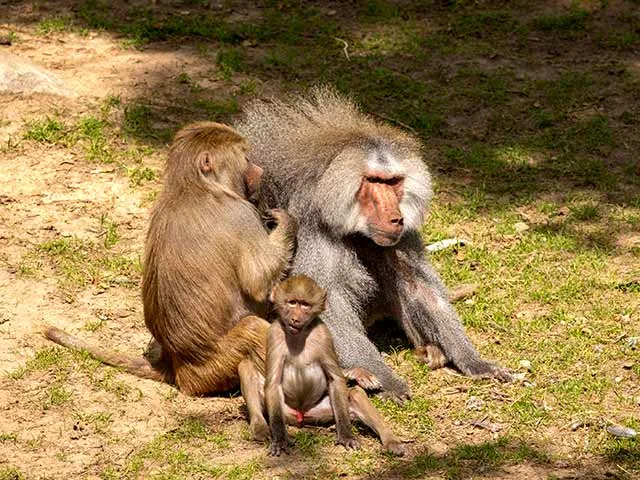
The Band of Baboons Is Back
After Renovation and Redesign, the Baboon Habitat is Now Open to the Public
We know you've missed the baboons! During the renovations, the baboons lived in a behind-the-scenes habitat with plenty of rehearsal time to return to their stage. The North Carolina Zoo’s band of baboons is now playing daily in their newly renovated habitat! Walk along the themed ruins, reminiscent of ancient Ethiopian architecture, while delighting in the antics of the playful baboons.
Why a Band of Baboons? Breaking It Down
In hamadryas baboon society, troops form when large numbers of baboons gather together at sleeping spots; the more baboons, the better protection at night. As the troop leaves a sleeping site, it breaks down into smaller groups called bands that break apart from the troop to forage and travel together. Most social interactions happen within bands.
Saving Species
The decision to revitalize the AZA population of hamadryas baboons is undeniably a huge success story. The North American population is up to 200 individual hamadryas baboons that are under human care, almost tripling the population from 2000. The North Carolina Zoo has been one of the most significant driving forces for this success story.
Members of the North Carolina Zoo have become leaders in hamadryas baboon care and management. They have been sought as a resource, growing the population to become one of North America's largest AZA facilities. The dynamic band of hamadryas baboons at the North Carolina Zoo is one of the most popular attractions for our guests, who hail from all over the world.
The road we traveled to introduce the band to their new and improved habitat was long but well worth it. We are delighted to know that this unique habitat will enable the Zoo's future guests to see and learn more about the behaviors and lives of the remarkable hamadryas baboons!



